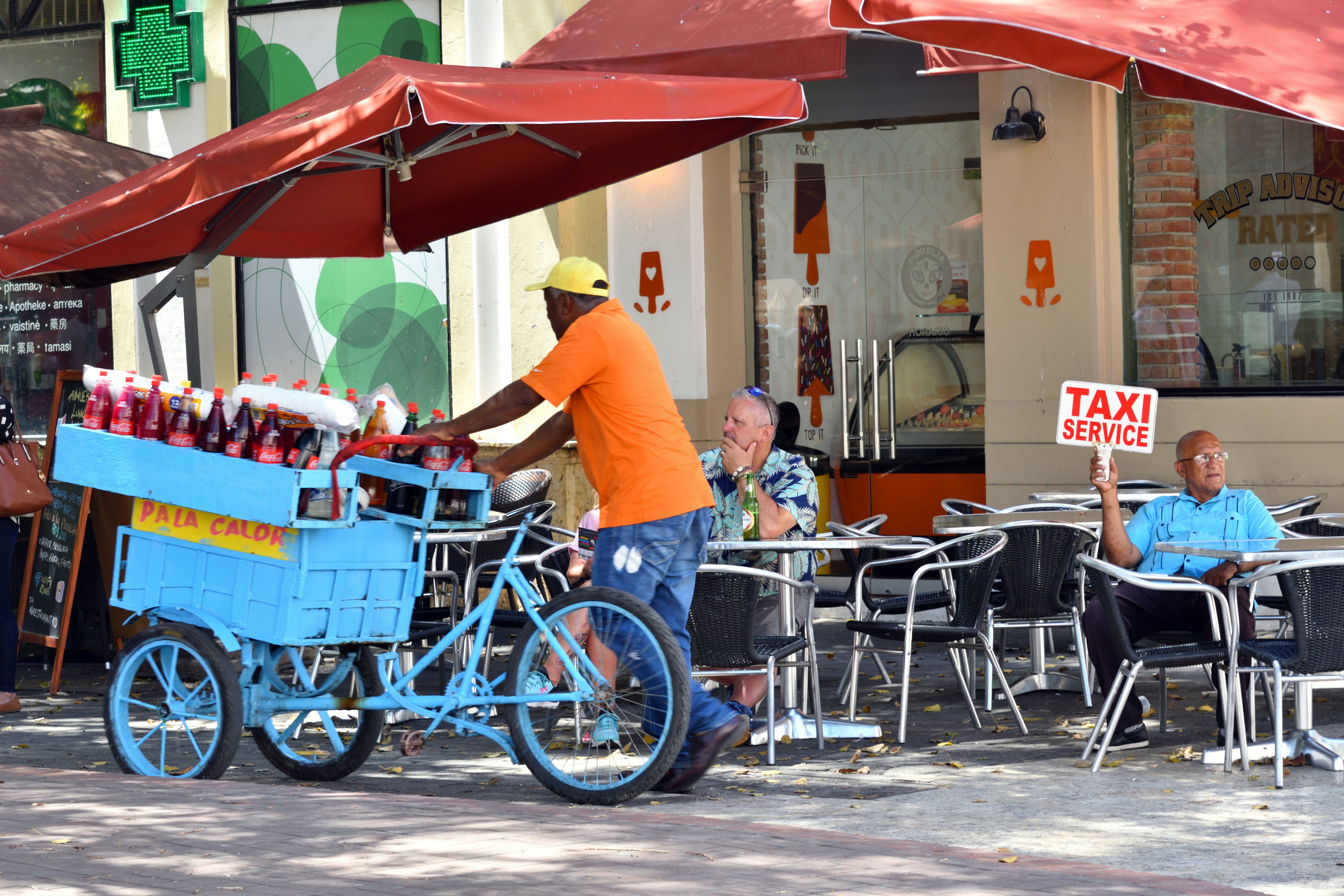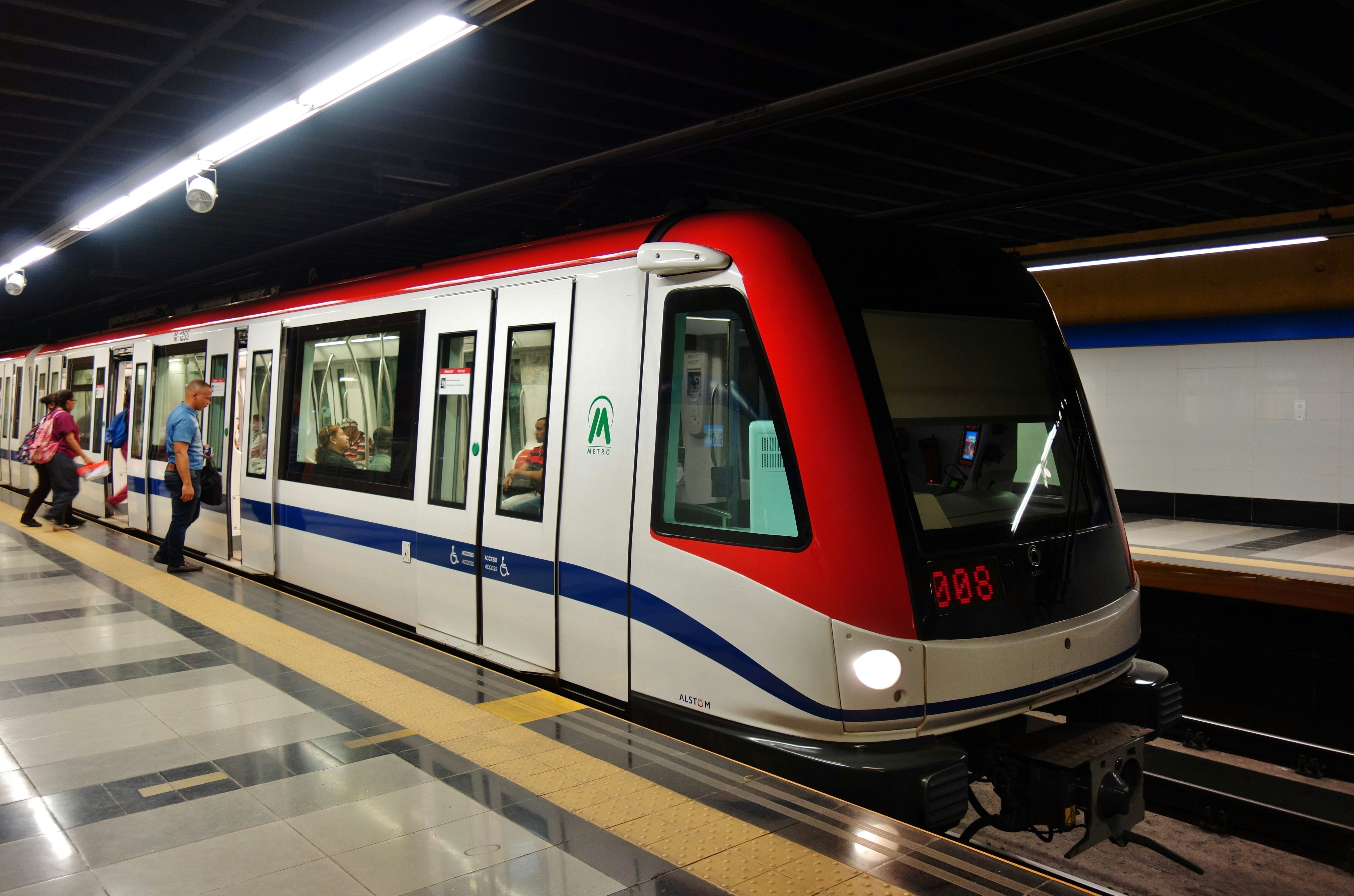
Getting around from beach to beach in the Dominican Republic

May 13, 2022 • 6 min read

Travelers to the Dominican Republic have plenty of options for getting from beach to beach © BGStock72 / Shutterstock
The first thing you need to know about getting around in the Dominican Republic: the locals are road warriors. Whether they’re heading off to work, shuttling children to school or visiting relatives who live in the countryside, Dominicans love roaming around their island home by car, bus or motorcycle.
To support all of this commuting, the island has an efficient highway system that keeps the population moving. A robust network of roads links towns and cities to villages and beaches strung out along more than 1288km (800 miles) of coastline.
Take advantage of the Dominican Republic’s reliable highway system and set off on an adventure in a rental car. For budget-conscious travelers who don’t mind abiding by a bus schedule, local buses are a viable alternative.
Here's a guide to the best ways to explore the Dominican Republic.
Rent a car for comfort and convenience
Renting a car in the Dominican Republic gives you the freedom to set your own agenda and travel at your own pace. And if the weather’s playing nice, the five major highways offer phenomenal views of the island's stunning scenery. Minor roads are less well maintained, so a 4WD can be useful.
All the major car rental companies have a presence on the island, usually in big cities and at the international airport. However, it’s a good idea to book your rental car online well ahead of your travel dates, as the inventory at local car hire firms can get low fast in season.
Car rental rates range from USD$35-$57 per day, depending on the type of vehicle and time of year, and prices tend to spike during the country’s high season (December to April). Visitors looking to rent a car must be 25 years of age and you'll need a valid driver’s license from your home country.
Tips for renting a car in the Dominican Republic: When booking, always opt for full insurance coverage, if possible taking out the La Casa del Conductor option. This will protect you from being taken to jail while police investigate any serious accident.
Expect tolls when traveling along the Dominican Republic's highways — fees range from RD$60 (US$1.10) to RD$100 (U$1.80) at each checkpoint, so keep some small change in Dominican pesos handy (although dollars are also accepted).
Stretch your budget by taking the bus
Coach buses affordably link major regions of the Dominican Republic, and they’re generally comfortable and safe. Bus travel is also very cost-effective when compared to renting a car. There are three major coach bus services in the Dominican Republic that offer reliable coach transportation between cities – Metro Tours, Caribe Tours and Expreso Bavaro.
All three offer coaches equipped with air-conditioning (a must in the Dominican Republic at most times of year), plus onboard Wi-fi and movie screens, with routes connecting bigger cities around the island. Bus fares range from RD$200 (US$3.60) to RD$500 (US$9) for a one-way trip.
Tips for bus travel in the Dominican Republic: Be sure to arrive an hour ahead of departure to secure a seat. Also, pack a jacket — the air-conditioning on buses tends to be chilly and passengers often have little control over the temperature.
Top things to do in the Dominican Republic

Taxis are easy to find in urban areas and tourist zones
Taxis can be found in most of the major cities and towns around the Dominican Republic, particularly in heavily touristed areas and hotel zones. The easiest way to hail a ride is by calling one of the island's big 24-hour taxi operators – Apolo Taxi and Aero Taxi are two of the biggest companies. Alternatively, ask your hotel to recommend and call a reliable company. Expect to pay around RD$150 (US$2.70) for a local trip.
Known as conchos or públicos, shared taxis offer a more economical alternative to private taxis, so as long you don’t mind traveling packed into a car or minivan with lots of other people. Fares start at $RD25 (US$0.45) for a short trip — a considerable saving at the expense of some comfort.
Best places to visit in the Dominican Republic
For smaller jaunts, hop on a guagua (minivan)
Small, privately-owned minivan buses known as guaguas are ideal for traveling to destinations around the Dominican Republic and some have the same amenities as the larger coach buses (air-conditioning, Wi-fi and a dedicated seat for each passenger).
They carry fewer passengers — expect around 25 riders per vehicle – and they stop to pick up and drop off passengers all along the route. Shorter rides cost between RD$35 (USD$0.65) and RD$60 (USD$1.10); longer routes may cost more, but fares usually don’t exceed RD$100 (USD$1.80).

Motorcycle taxis can zip you through the traffic
Locals lean heavily on motoconchos (motorcycle or scooter taxis) to quickly zip in and out of traffic. They’ve been in use on the island since the 1980s and are quicker and more affordable than conventional taxis or rideshares. Fares range from RD$25 (USD$0.45) to RD$75 (USD$1.35) depending on the distance. However, they also come with risks — drivers usually don’t offer passengers a helmet, even though they’re legally required to do so.
Motoconchos are a popular means of transportation for getting around the downtown areas in Santo Domingo, Puerto Plata and other major cities. You’ll also find in-city guaguas and shared conchos to help you get to your destination.
Rideshares are easy to find in major hubs
Uber has been available in the Dominican Republic since 2015, operating in Santo Domingo, Puerto Plata and Santiago. Traveling by rideshare is generally safer, and pricier, than using some of the taxis and conchos on the road – cars tend to have working seatbelts and are in better condition than some other modes of transportation available to visitors. Cabify, an alternative ride-sharing app, is currently only available in Santo Domingo.

Save time by hopping on Santo Domingo's Metro
In Santo Domingo, you’ll find locals commuting to work on the Metro, a rail-based rapid transit system that stops at various popular tourist sites within the city. Two main lines traverse the greater Santo Domingo area daily from 6am to 10:30pm. A ride costs RD$20 (USD$0.35) plus RD$15 (USD$0.25) for the ticket card, or you can buy a day-pass for RD$80 (USD$1.45).
Top things to do in the Dominican Republic from casinos to whale watching
Accessible transportation in the Dominican Republic
Dominicans are helpful by nature and likely to assist visitors, but accessible transportation in the Dominican Republic can be tough to find in more rural areas. Curb ramps are common in major downtown hubs like Santo Domingo, Punta Cana and Puerto Plata, and it's easy to find wheelchair-accessible shuttles to hotels. Parking areas rarely have spaces for drivers with disabilities, and most buses and taxis aren’t wheelchair accessible. For more information on accessible travel, download Lonely Planet's free Accessible Travel Resources.













